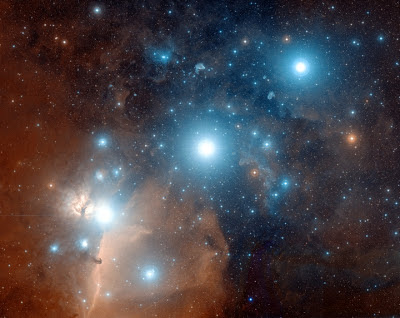Blue Stars Indicate a Young Universe
 |
| Alnitak, Alnilam, Mintaka Credit: Digitized Sky Survey, ESA/ESO/NASA FITS Liberator Color Composite: Davide De Martin (Skyfactory) |
Blue stars cause a problem for cosmologists: They should not exist. Since they are bigger and hotter than other stars, and their fuel supply should be exhausted comparatively quickly. Blue stars exist on our own Milky Way galaxy.
In a manner reminiscent of the Oort Cloud excuse for replenishing short-term comets, cosmologists say that certain areas are "stellar nurseries" where new stars are being formed. Except that there is no observational evidence of such a thing, it only exists in theory. Biblical creationists do not need to conjure up excuses like the Oort Cloud or stellar nurseries.
Orion is one of the most well-known and easily recognized constellations of the winter sky. The three bright blue stars in Orion’s belt seem to draw our attention instantly. Such stars are a strong confirmation of the biblical timescale.
Most stars generate energy by the process of nuclear fusion of hydrogen into helium in the stellar core. This is a very efficient power source. Theoretically, a star like the sun has enough hydrogen in its core to keep it burning for ten billion years. But that’s not the case with blue stars.
Blue stars are always more massive than the sun. This means they have more hydrogen available as fuel. Yet, blue stars are much brighter than the sun; some are over 200,000 times brighter! They are “burning” their fuel much more quickly than the sun, and therefore cannot last billions of years. Based on their observed luminosity, the most massive blue stars cannot last even one million years before running out of fuel.You can read the rest of "Blue Stars Confirm Recent Creation", here.